The Casentino Forest s are a unique place straddling Tuscany and Romagna where unparalleled nature frames medieval villages, ancient castles, parish churches and shrines with ancient charm. Always a land of passage for pilgrims and merchants, the Casentino Forests have been a nerve center and most important place for whoever had dominion over these lands. Since Etruscan times, the Casentino Forests have been home to important settlements, and the timber from their trees has been an extremely important resource century after century. Crossing the Casentino Forests, one immediately senses the disruptive force of nature with a continuous contrast between the green of the forests and meadows, which here takes on all possible shades from emerald to turquoise, contrasting with the azure and blue of ever-clear skies. The whole Casentino, however, is also a land that preserves and enhances a great treasure made up of traditions, customs and traditions linked to the rhythms of the rural and silvo-pastoral civilization, but also to a history that here has always been with a capital “S”. A borderland, the Casentino with its forests have long been immutable witnesses of clashes and battles for the domination not only of their great natural resources, but also of strategic passes. Testifying to all this are still castles, fortresses and towers of unique charm, although what makes these places famous are first and foremost its sanctuaries. From the hermitage of Camaldoli to Chiusi della Verna where, among beech and fir trees, according to tradition St. Francis received the stigmata. Here are ten not-to-be-missed stops on your journey to discover the Casentino Forests and their immediate surroundings in the Valtiberina.
An unmissable destination for all lovers of hiking and the outdoors, the Casentino Forests National Park straddles the Apennines between Tuscany and Romagna and has in the 1,658 meters of Mount Falco and the 1,654 meters of Mount Falterona, where the Arno has its source, its most important peaks. The whole of the park’s vast territory can be visited by taking evocative trails on foot or by mountain bike, on horseback and, in winter, on skis and snowshoes. In all, the trails extend for about 600 kilometers and offer unique scenery that can be appreciated by following routes that can give satisfaction both to those who are looking for more challenging itineraries and to those who simply want to relax walking in nature and breathing good air. Besides the various trekking routes, on the other hand, there are 9 nature trails in the park territory, short itineraries located in easily accessible areas. Also not to be missed are the Valbonella Botanical Garden in the municipality of Santa Sofia, the Arboretum and Forestry Museum “Siemoni” in Badia Pratagli and the Forestry Museum “Campadelli” in Campigna.
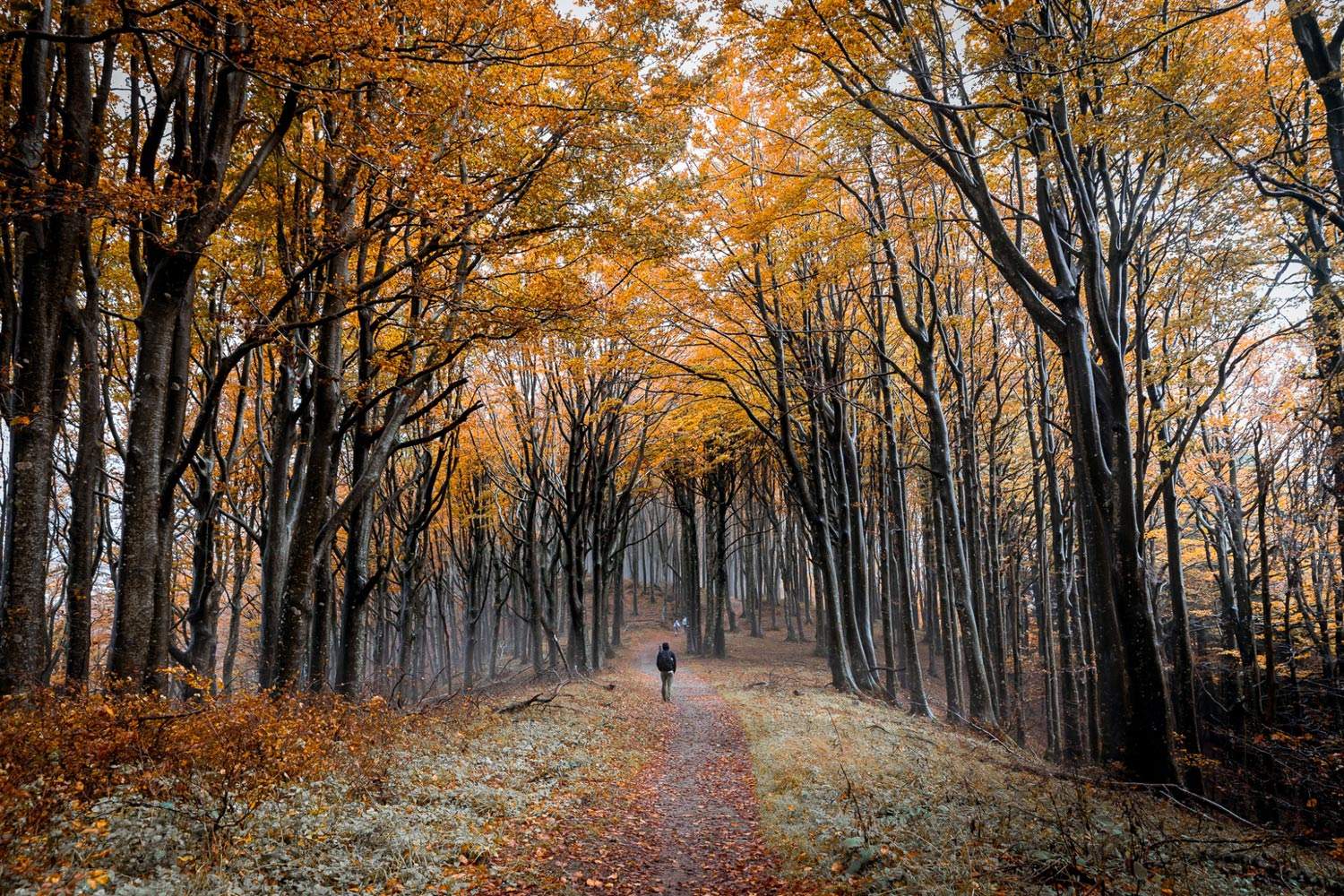
Chiusi della Verna contends with the neighboring town of Caprese Michelangelo for the title of birthplace of the great artist, since in 1475 the father of the Renaissance genius was podestà here. The one in the footsteps of the great artist, however, is only one of many routes that can be followed when exploring Chiusi and the Casentino and its still intact village. The heart of a visit in these parts is in any case necessarily La Verna, the sacred mountain given to St. Francis in 1213 and still home to one of the most important Franciscan sanctuaries. A place endowed with a unique mysticism, here according to tradition the saint received the stigmata and spent long periods during the year here. The construction of the place of worship, immersed in the deep green of the Casentino forests, dates back to 1216 when the first stone of the chapel of Santa Maria degli Angeli, also known as “la Chiesina,” was laid. Construction of the major basilica, however, did not begin until the following century; its Latin-cross interior has a single nave and some of the Della Robbia family’s terracottas are kept here. The heart of the shrine, however, is the Chapel of the Stigmata whose central wall is covered entirely by Andrea della Robbia’s Crucifixion.
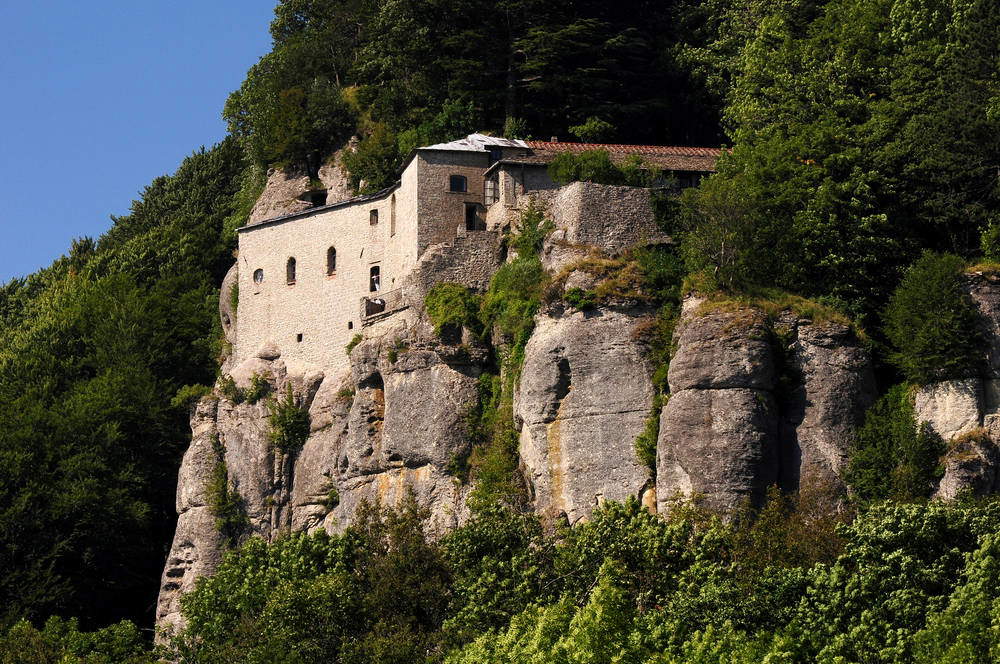
A perfectly preserved medieval village, Anghiari offers visitors the opportunity to go on an up-close tour of the everyday life of a bygone era. Enclosed by thirteenth-century city walls, the town of Anghiari, in the province of Arezzo, is a continuous succession of alleys and narrow streets overlooked by medieval village houses and ancient palaces. First and foremost, what makes Anghiari famous is the great battle that took place in 1440 between the Florentines and the Milanese and was immortalized in a work, now lost, by Leonardo da Vinci in the Salone dei Cinquecento of Palazzo Vecchio in Florence. Today Anghiari certainly represents one of the must-see stops on your vacation to discover the beauty of the Casentino Forests thanks to a continuous succession of evocative views just waiting to be immortalized. Very rich, as mentioned, is also the architectural and artistic heritage of Anghiari starting with the eighteenth-century church of Santa Maria delle Grazie and then again Palazzo Taglieschi with its state museum that collects several works of the Florentine sixteenth century and, last but not least, Palazzo della Battaglia that houses the museum of the same name.
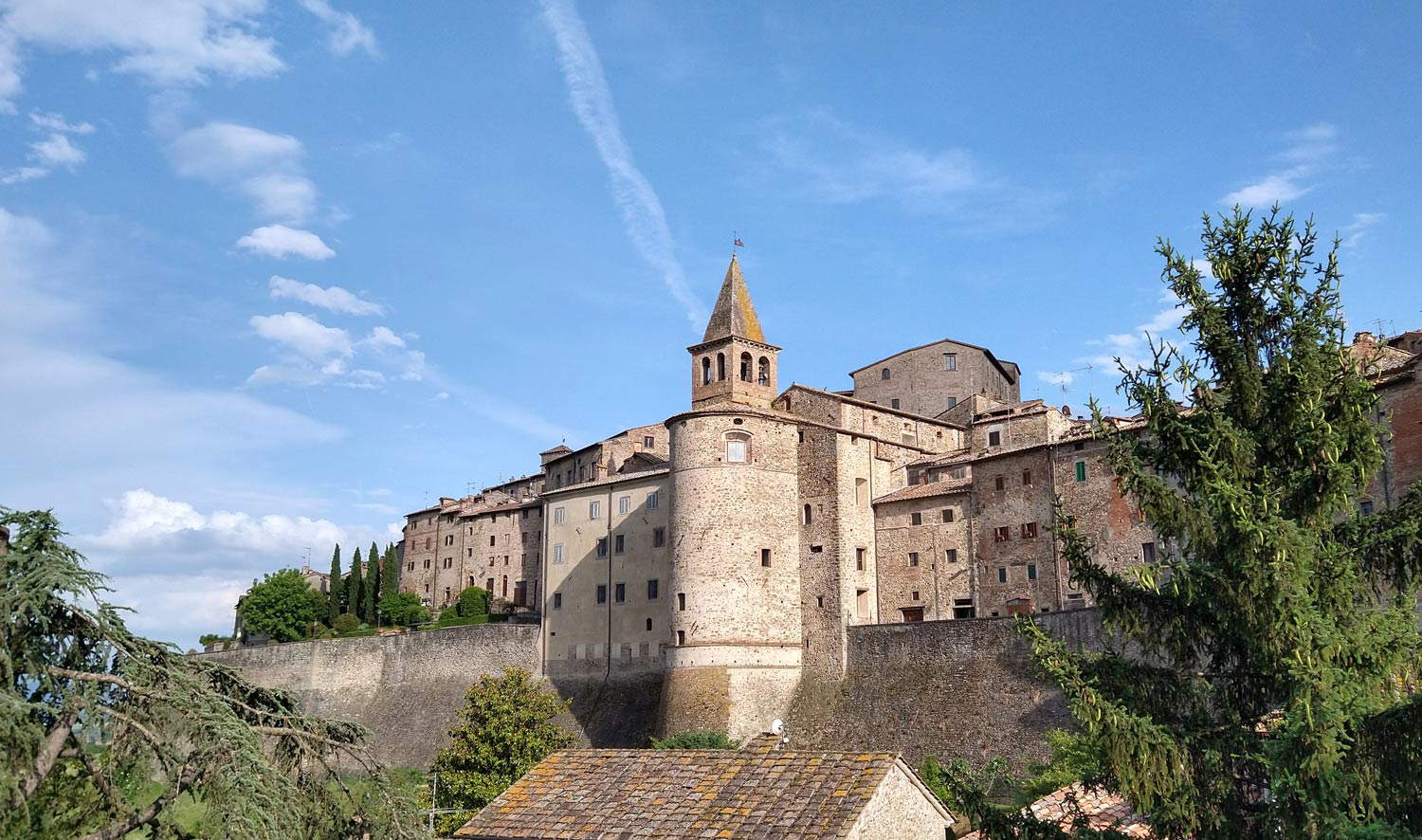
Nestled among the hills that slope gently toward the Tiber valley, Monterchi is a very charming and quaint village where you can breathe deeply the atmosphere of this magical land. What makes Monterchi famous is above all the presence of one of Piero della Francesca’s masterpieces: the Madonna del Parto. It is a large fresco dating from around 1460 originally painted in the small chapel of Santa Maria Momentana in Monterchi. Today this masterpiece is kept inside a specially built museum and is visited by many visitors every year. However, Monterchi is not only the home of the Madonna del Parto; it is a village with a strong identity where traces of the past are still clearly visible. The historic center is gathered within beautiful medieval walls and in every corner offers suggestive glimpses. Also very interesting is the church dedicated to the patron saint of the village, San Simeone, which houses inside or interesting works of art.
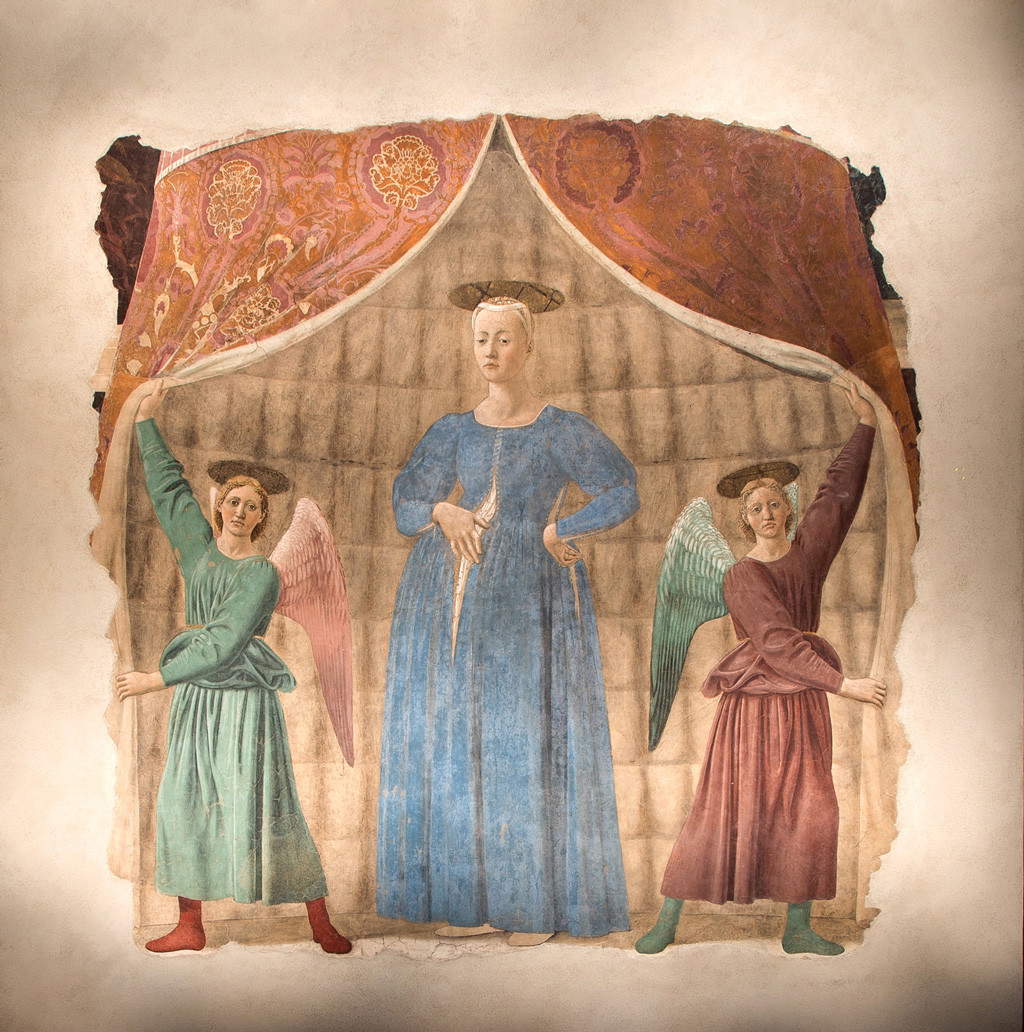
Poppi is Casentino: the heart and symbol of this territory, Poppi with its magnificent castle perfectly preserved well testifies to centuries of traditions and history of these valleys. The castle of Poppi is certainly one of the most immortalized corners of the entire Casentino and with its unmistakable profile rightfully ranks among the most famous buildings in the whole of Tuscany. The construction of the castle of the Conti Guidi dates back to the end of the 12th century, at a time when Poppi was by then the political capital of the entire Casentino, a role it would retain even from 1440 when the rule of the Florentine Republic began. The castle is characterized by a mullioned facade, at the center of which stands a tall tower, and surrounded by walls with Guelph battlements and a large moat. Repeatedly restored and perfectly preserved, the castle houses a museum inside and the ancient library known as the Rilliana, named after the founder, Count Rilli-Orsini, which is full of 25,000 ancient volumes. Also of absolute value is the chapel of the Counts Guidi, which houses a cycle of 14th-century frescoes attributed to Taddeo Gaddi, a pupil of Giotto.

This small village is located on the Florentine side of the national park and owes its name to the painter Andrea del Castagno, a great artist of the Florentine Renaissance to whom a permanent exhibition inside the park’s visitor center is dedicated, tracing his life and works. Castagno d’Andrea, however, is the ideal place to set out to explore the Falterona, Falco and Acuto mountains. From here there is a dense network of trails that enter the woods and then climb to the peaks following paths suitable for everyone, both experienced and novice hikers. As the name of the village itself suggests, dominating the landscape of these lands is above all nature with its thousands of colors and, in particular, with the striking large “marronete,” centuries-old chestnut woods cultivated according to a tradition that has been handed down from generation to generation for the production of marrons that only form the basis of so many dishes and typical products throughout Casentino.
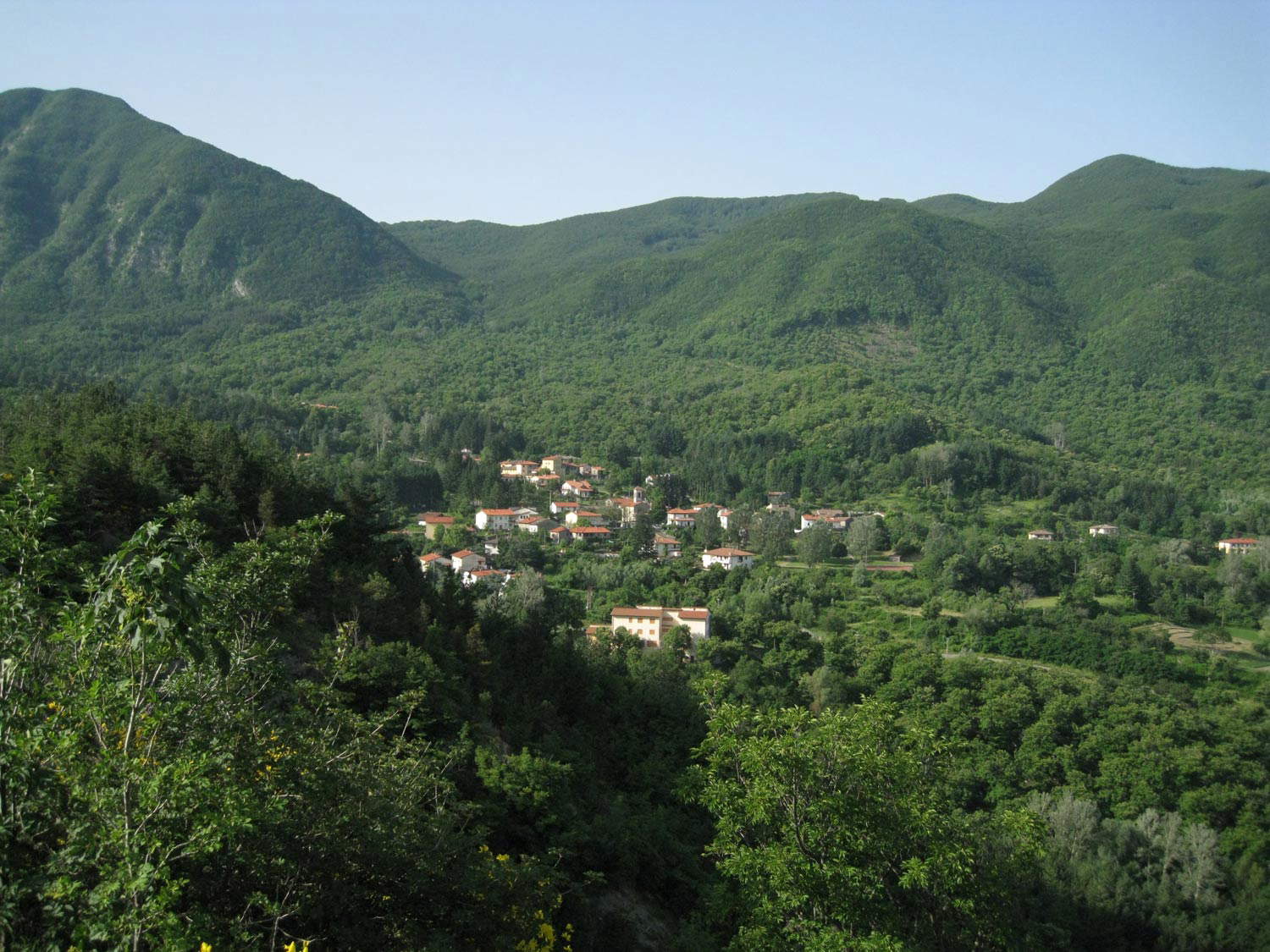
This little gem surrounded on all sides by the bursting beauty of the Casentino forests is the ideal starting point for a trip to discover the Acquacheta Falls and their unique charm. From San Benedetto in Alpe, one can follow an easy path up along the stream to the top of the waterfall from where one can admire an unparalleled panorama that impressed even Dante Alighieri who, in the Divine Comedy, compared the “fall” of the Acquacheta to the waterfall of the infernal river Flegetonte that separates the seventh from the eighth circle of hell. However, it is not only the wonders of the landscape that make San Benedetto in Alpe a must on your trip through the Casentino forests, it is the village itself that holds small and large treasures just waiting to be revealed. Among these the most shining gem is surely the great Benedictine abbey, which with its austere profile has been the center of life, spiritual and otherwise, in the village for centuries. Of medieval origin, during its long life the abbey has undergone several expansions and restorations and still preserves many beautiful works of art inside.

Art and spirituality meet in Caprese Michelangelo. Here, inside the ancient medieval castle, Michelangelo Buonarroti is believed to have been born in 1475, and on the figure of the Renaissance genius, as well as the nearby town of Chiusi della Verna, Caprese has created numerous itineraries. In particular, Caprese is home to the Museum of Michelangelo’s Birthplace, which allows a journey back in time to the origins of the great artist. These lands that separate two great rivers like the Tiber and the Arno have been inhabited since ancient times with already Etruscans and Romans appreciating the riches that nature had to offer. The history of Caprese Michelangelo, as well as that of the surrounding villages, is thus very long and has seen not only great artists pass through, but also rulers and leaders. St. Francis himself left numerous testimonies here during his long walks to the holy mountain of La Verna.

Camaldoli is a community of Benedictine monks founded more than a thousand years ago by St. Romuald. Its two houses, the Sacred Hermitage and the Monastery, are entirely surrounded by forest and immediately convey to those who arrive what are two of the fundamental principles of the monastic experience: solitude and communion. The origins of the Camaldoli hermitage are traced back to the year 1025 when Romuald initiated the construction by drawing on the spirituality of the desert fathers: monks who retreated from the earliest centuries of Christianity to the deserts of Syria, Palestine, and Egypt to live a daily life interwoven with prayer, silence, solitude and work. The Camaldoli hermitage is thus an agglomeration of hermit cells with a church for communal prayer. At first there were five cells, now there are twenty and they are spread over five rows that wind past the enclosure gate. The most recent cell dates back to 1743. In addition to the cells, the complex consists of common buildings that house the library, refectory, a small guesthouse and spaces for groups, meetings and personal prayer. The monastery, on the other hand, has always been a place open to welcoming guests and pilgrims, and since the last century, the guest quarters have been renovated and cultural and spiritual formation proposals initiated, which are one of the main commitments of the community monks living at the monastery.
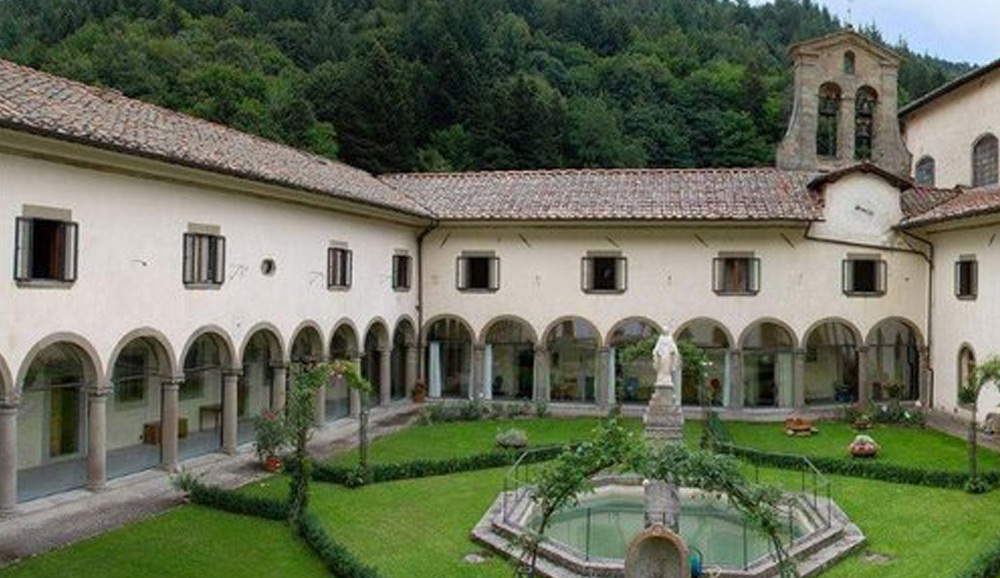
Bibbiena is the largest municipality in Casentino and is considered its capital. The town rises about 425 meters above sea level and offers enviable views not only of the surrounding valley but also of the entire Pratomagno massif. Bibbiena’s origins date back to the year 1000 when the bishops of Arezzo had a castle built that was to be the outpost of the territory of Arezzo on that of the upper Casentino dominated by the Guidi. On June 11, 1289, the day of the Battle of Campaldino between the Guelphs and Ghibellines in which Dante Alighieri also participated, Florentine troops besieged the castle, conquering it and then starting the looting and destruction. Tragic events that were repeated several times even in the following centuries so much so that today there is little architectural evidence of Bibbiena’s fortified period. However, this does not mean that there is no lack of reasons to dedicate a visit to this beautiful village. Beginning in the 16th century, the great rebirth of Bibbiena began according to a purely Renaissance style as evidenced by the many elegant buildings such as palazzo Dovizi. Opposite this is the church of San Lorenzo where two large terracottas attributed to Luca della Robbia the Younger stand out. Bibbiena’s most important church, on the other hand, is that of the Propositura, which preserves many works of high artistic value, of various kinds and spanning a period from the 13th to the 17th century. Also worth seeing is the Casentino Archaeological Museum located in Nicolini Palace.

 |
| Casentino forests, what to see: 10 places not to be missed |
Warning: the translation into English of the original Italian article was created using automatic tools. We undertake to review all articles, but we do not guarantee the total absence of inaccuracies in the translation due to the program. You can find the original by clicking on the ITA button. If you find any mistake,please contact us.